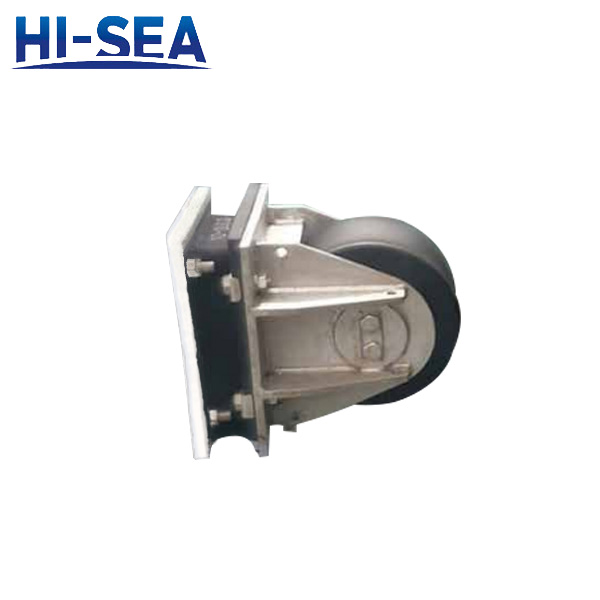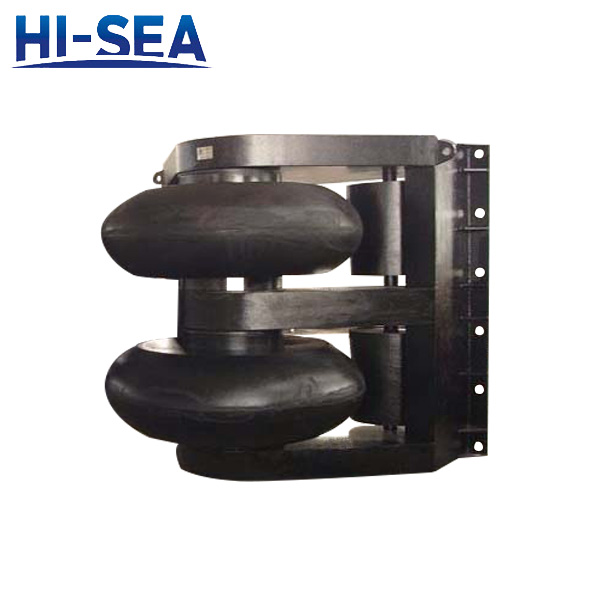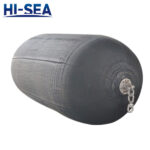Cushion Roller Fender Drawing and Dimensions:
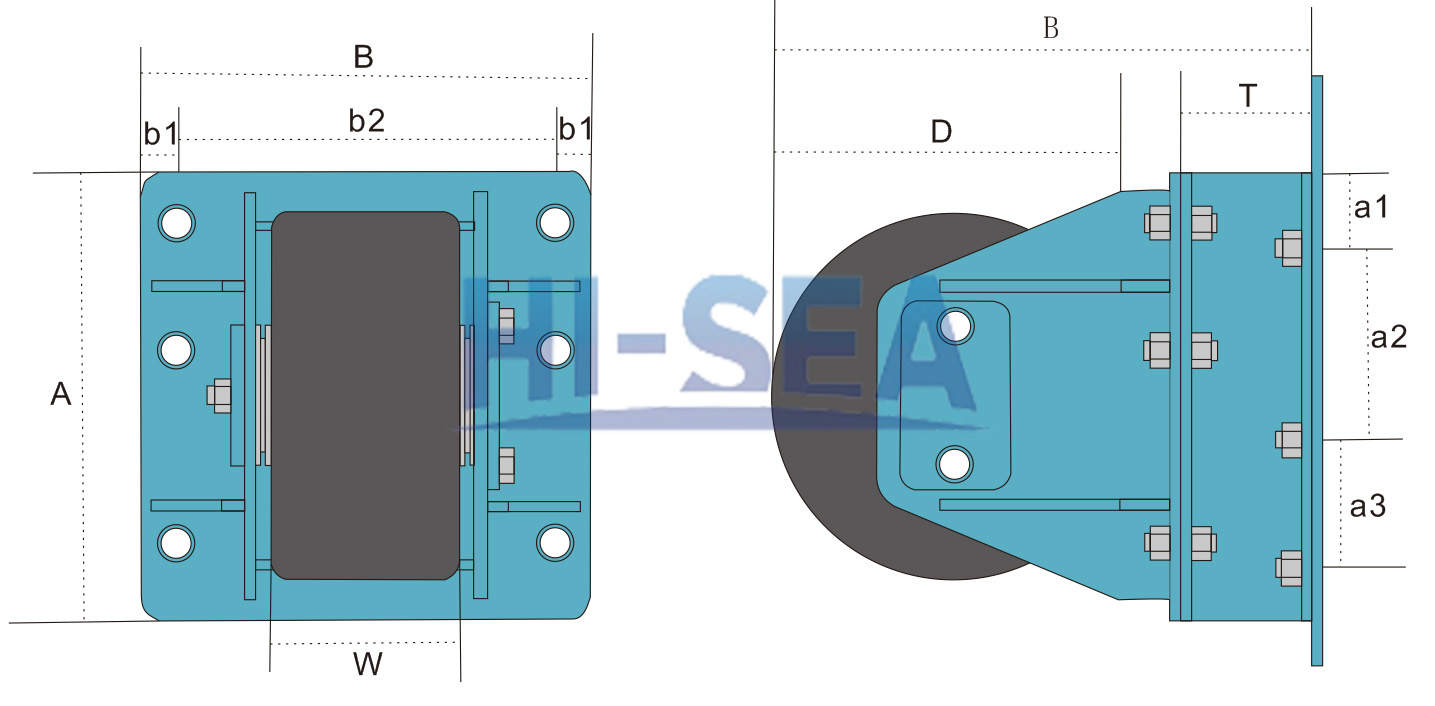
| A |
B |
C |
D |
T |
W |
a1 |
a2 |
a3 |
b1 |
b2 |
Fixings |
| 450 |
450 |
542 |
370 |
130 |
125 |
90 |
310 |
– |
35 |
380 |
4×M20 |
| 450 |
450 |
542 |
370 |
130 |
190 |
90 |
175 |
135 |
35 |
380 |
6×M20 |
| 450 |
520 |
546 |
370 |
130 |
250 |
80 |
160 |
120 |
50 |
420 |
6×M24 |
| 450 |
550 |
546 |
370 |
130 |
315 |
90 |
175 |
135 |
35 |
480 |
6×M24 |
| 480 |
630 |
570 |
380 |
130 |
315 |
90 |
180 |
120 |
55 |
520 |
6×M36 |
| 770 |
725 |
690 |
450 |
200 |
350 |
120 |
300 |
300 |
70 |
585 |
6×M36 |
|
NOTA (unidades:milímetro)
|
El plano y las cotas son de referencia. Otras especificaciones también están disponibles. Póngase en contacto con nosotros para obtener información detallada.
Aplicación de Cushion Roller Fender:
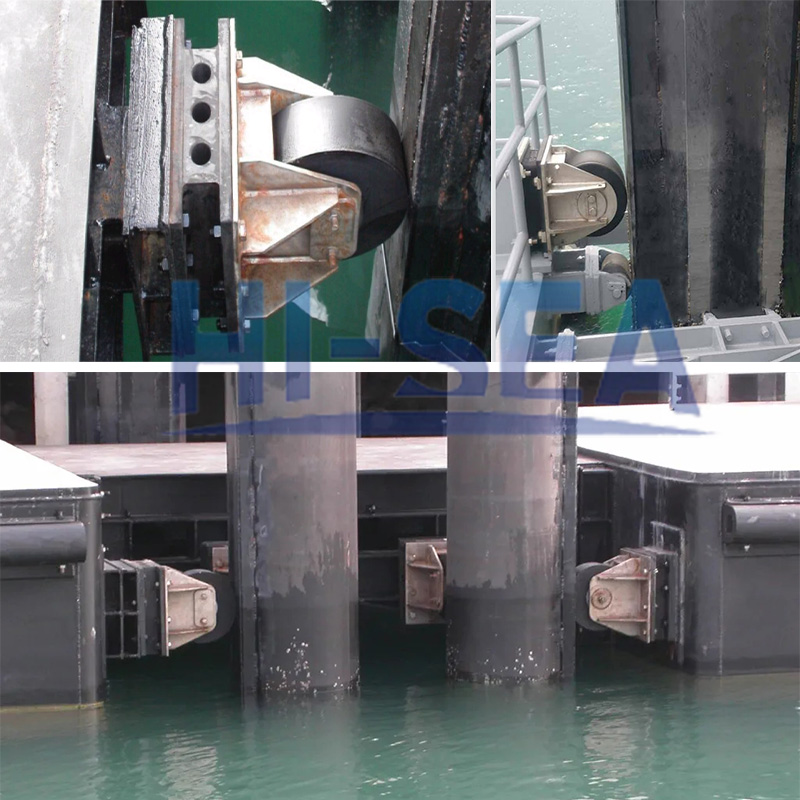
Introducción:
Cushion roller fender has similar profile as roller fender and wheel fender, but it is way much smaller than them. It is used to guide pontoons and floating structures quietly up and down their guide piles. With steel bearings, cushion fenders require lower maintenance. The design of this fender is to guide the pontoons and also to help absorb extra berthing impacts, so that the floating can be protected to the maximum extent.





